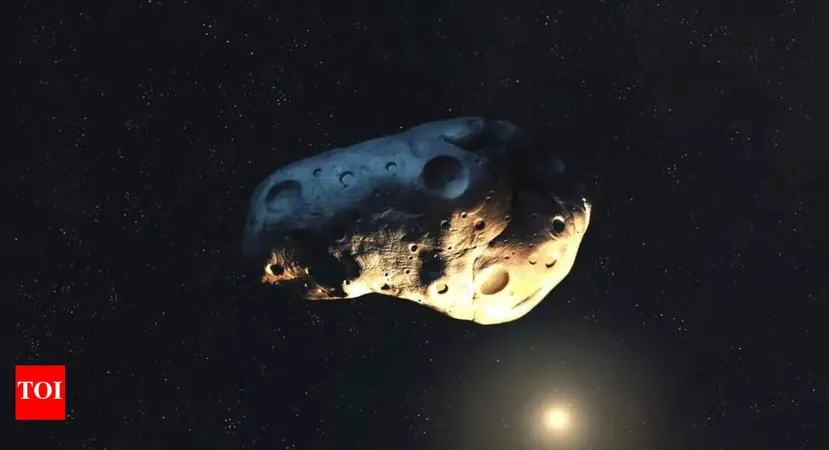
Asteroid Vesta: A Surprising Fragment of a Shattered Planet?
2025-05-21
Author: Nur
A Revolutionary Discovery Shakes Our Understanding of Vesta
Forget everything you thought you knew about Asteroid Vesta! New research from Michigan State University is turning long-held beliefs on their head, suggesting this rocky body could be a remnant of a much larger planet that met its demise in a colossal collision over 4.5 billion years ago. This groundbreaking study, published in the prestigious journal Nature Astronomy, reveals that Vesta may not be the protoplanet we once believed it to be.
Rethinking Vesta's Core: The Missing Metal Mystery
NASA's Dawn mission provided crucial gravitational data that contradicts earlier hypotheses about Vesta's structure, particularly the notion that it has a metal-rich core. Lead researcher Seth Jacobson explains that this new evidence points to an uncharted territory in planetary science: Vesta’s interior structure aligns more with a fragment than a fully developed planet. The absence of a dense core indicates Vesta might have never achieved the complete planetary differentiation expected of a body of its size.
Volcanic Evidence: Questions About Vesta's Origins
Intriguingly, Vesta’s surface boasts signs of volcanic activity, showcasing a basaltic crust synonymous with differentiated bodies. Yet, with no internal differentiation, Jacobson and his team challenge previous assumptions about how such volcanic features emerged. Their findings suggest that Vesta may have retained some internal uniformity and could have formed from debris resulting from earlier planetary impacts, raising fascinating questions about its geological history.
A New Paradigm for Asteroids: The Case for Disintegration
This innovative perspective proposes that Vesta isn't alone; many asteroids could represent debris from larger, once-whole planets. Future missions, including NASA's Psyche and the European Space Agency's Hera, aim to explore this concept further, potentially transforming our understanding of asteroid origins. If Vesta is indeed related to early planetary bodies like Earth, it could signal a monumental shift in how we classify and comprehend these cosmic relics.
Vesta: A Celestial Giant in Our Solar Neighborhood
As the second-largest object in the asteroid belt—making up nearly 9% of its total mass—Vesta has a rich history dating back to its discovery by German astronomer Heinrich Wilhelm Olbers in 1807. Named after the Roman goddess of home and hearth, Vesta has intrigued scientists ever since. The Dawn spacecraft, which orbited Vesta from 2011 to 2012, gathered vital data that has propelled these revolutionary theories about its formation and significance.
The Implications of Vesta's Identity
With its unique geological features and puzzling structure, Vesta may very well hold the key to understanding the formation of not just asteroids, but planets themselves. As we dig deeper into the mysteries surrounding this celestial body, we're one step closer to unraveling the tale of our solar system's tumultuous history.



 Brasil (PT)
Brasil (PT)
 Canada (EN)
Canada (EN)
 Chile (ES)
Chile (ES)
 Česko (CS)
Česko (CS)
 대한민국 (KO)
대한민국 (KO)
 España (ES)
España (ES)
 France (FR)
France (FR)
 Hong Kong (EN)
Hong Kong (EN)
 Italia (IT)
Italia (IT)
 日本 (JA)
日本 (JA)
 Magyarország (HU)
Magyarország (HU)
 Norge (NO)
Norge (NO)
 Polska (PL)
Polska (PL)
 Schweiz (DE)
Schweiz (DE)
 Singapore (EN)
Singapore (EN)
 Sverige (SV)
Sverige (SV)
 Suomi (FI)
Suomi (FI)
 Türkiye (TR)
Türkiye (TR)
 الإمارات العربية المتحدة (AR)
الإمارات العربية المتحدة (AR)